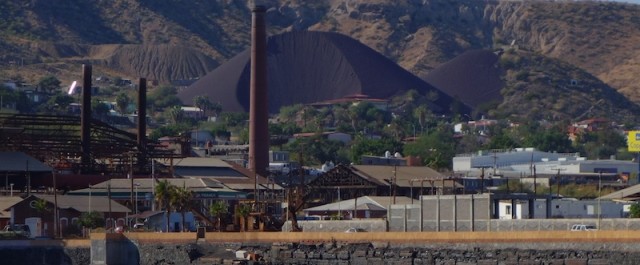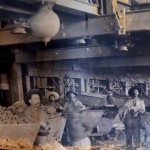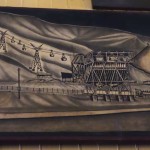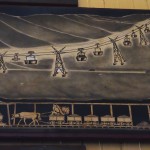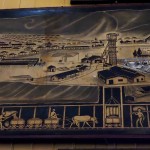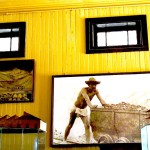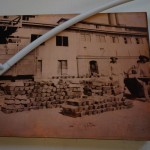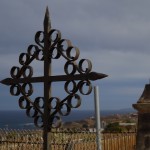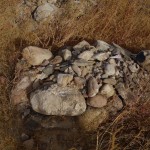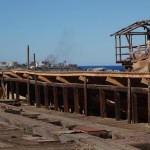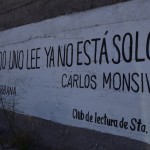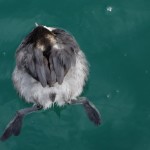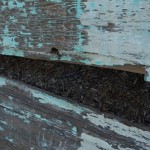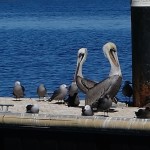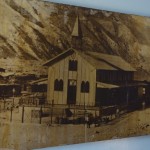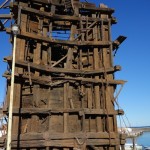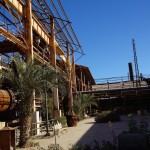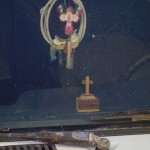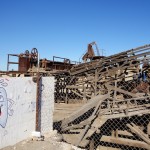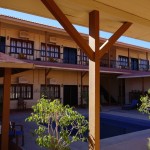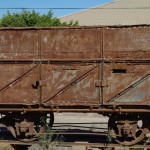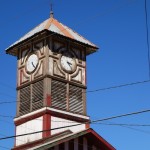Santa Rosalia is unusual among the towns of Mexico, because it was designed and built from scratch, mostly from wood, more than a century ago, by the French, specifically by the French mining empresa Compagne du Boleo. Plus, all the mine’s industrial buildings were right in town. And they still are, deteriorating scenically to this day. For some reason, century-old dereliction is more appealing than the modern type.
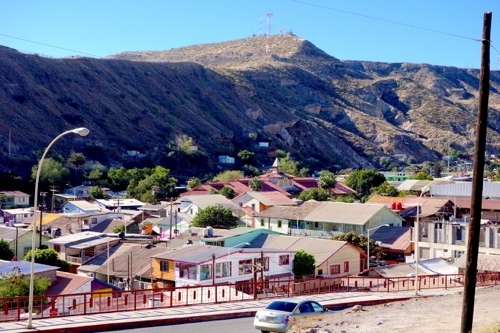
The Compagnie du Boleo to Minera Boleo
The story is that a local rancher, José Villavicenio, found a “crumbly blue-green rock” which assayed out to very pure copper, a boleo.
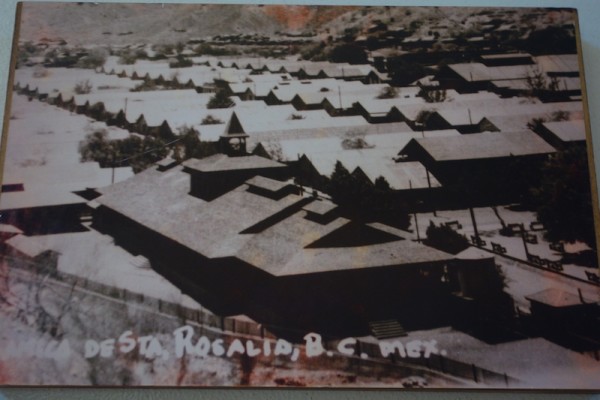
So, with the encouragement of the Mexican government, the Boleo Company created the town of Santa Rosalia out of nothing, and brought in 6,000 souls to run the port, smelter, railway, and mines.
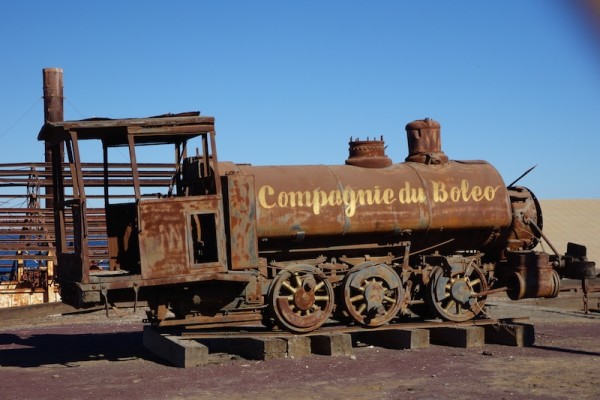
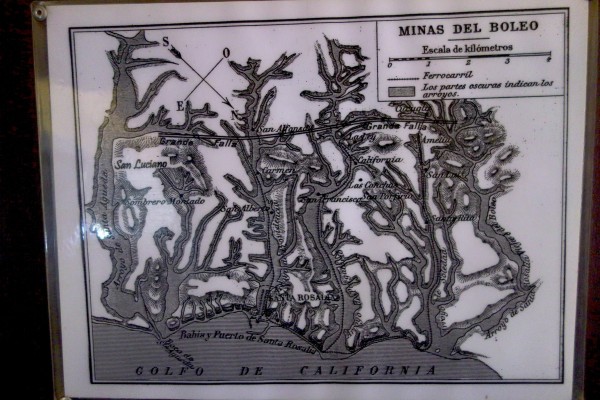
Mining took place in four arroyos, named Inferno, Purgatory, Solitude and Providence, the arroyo where the town was located. (An arroyo is a steep-sided gully cut by running water in an arid or semiarid region.)
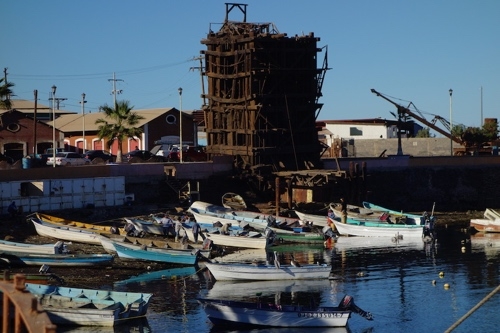
By the way, most of this quick overview is based on the writings of Graham MacIntosh in his entertaining book Journey with a Baja Burro written in the late 1990s, and Joseph Wood Krutch, The Forgotten Peninsula, published in 1960, and on the reader boards at the Boleo Museum, which were not in any way improved by my sketchy translations and imperfect memory of them.
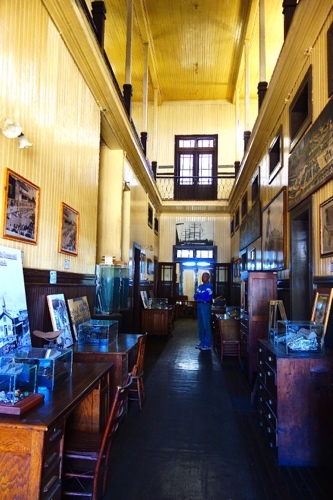
Eventually there were 370 miles of tunnels and 25 miles of railroad track, 7 locomotives I think, and over a hundred ore cars.
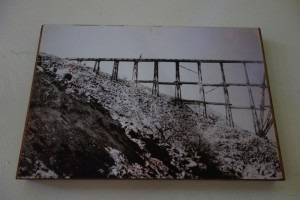

The company closed in 1954. Wikipedia says a government-owned company took it over and ran it with the original technology (!) until the 1980s, when it just became too impractical.
In addition to interesting-sounding mineral-ites, “even turquoise”, MacIntosh says there are old dolls, miner’s lamps, broken pottery and the like lying around settlements that existed at some of the mine entrances. We started out on our bicycles for an inland excursion, but between a surfeit of rocks and ruts on the dirt roads and a deficit of space on the highway, we gave up.
Nowadays there is a Korean-Canadian consortium ramping up for renewed production of zinc sulfate, copper, cobalt and manganese. In early 2015, we heard that operations had finally commenced on an open smelter several miles north of town. The proposed underground operations have perhaps hit a snag or two, but hiring is taking place.
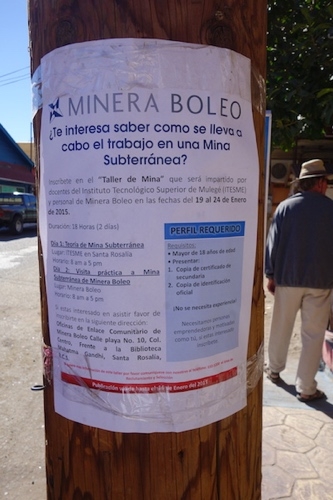
Surely conditions will be better than those for the workers at the turn of the century.
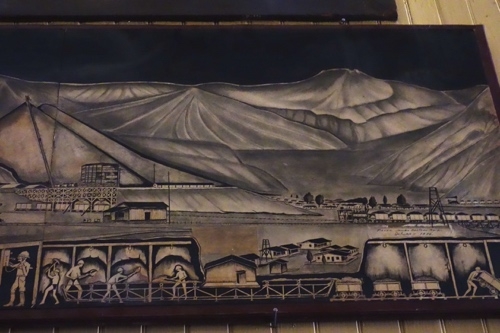
In addition to conditions in the tunnels, somewhere I read that between 1900 and 1910 some three thousand lives were lost because of gas explosions and poisonous vapors from the smelters.
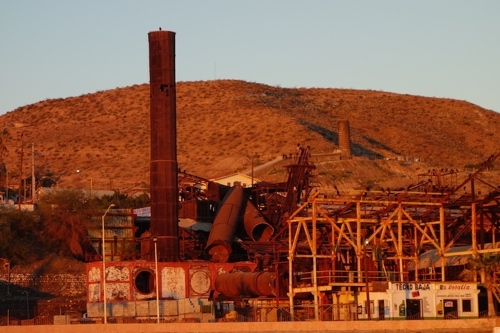
In an attempt to solve this problem, an “extension chimney” was built from the smelter downtown to a new chimney higher up.
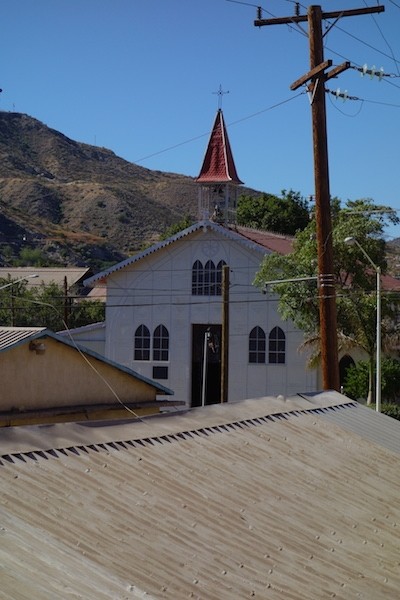
An often-mentioned attraction in town is the Eiffel (as in Tower)- designed church, remarkable perhaps not for its delicacy and grace, but for its prefabricated utility. The story goes that the women of town wanted a church; a mine official found this one languishing in a warehouse somewhere in Europe and sent it over. I like that it is named for Saint Barbara, patron saint of miners. And Santa Rosalia was a religious hermit who lived in a cave on Mt. Pellegrino, Palermo, Italy, and died there in 1166.
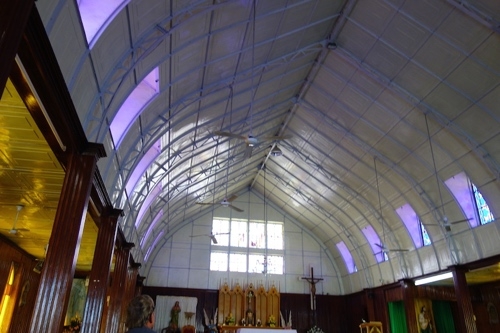
Meanwhile, in today’s Santa Rosalia, home to almost 12,000 in the 2010 census, many of the accommodations built for the workers still exist, including the Mutualist Progressive Society and a nicely sky-lit market. There is a ‘celebrated’ French bakery, but the bread, sadly, is not French. Government agencies seem to have appropriated the nice wooden bungalows of the managerial class in the Mesa Frances, while down in the arroyo some of the wooden houses have grown comfortable under the shade of a surprising number of trees.
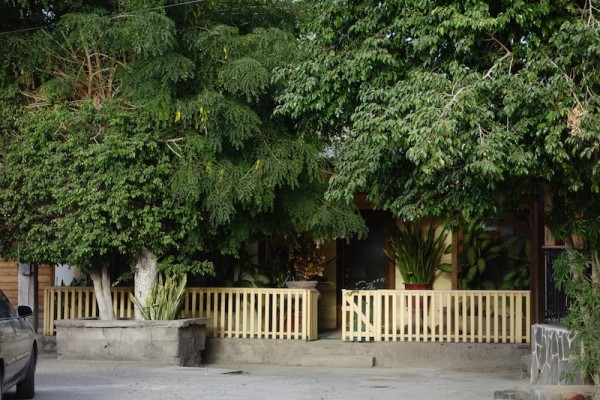
There has been architectural ‘re-muddling’ of course, but also some maintenance sensitive enough to pattern the new concrete walls to match the former wood siding. There is also some curious re-roofing that looks like sprayed on closed-cell foam with a heavy coat of paint for sun protection.
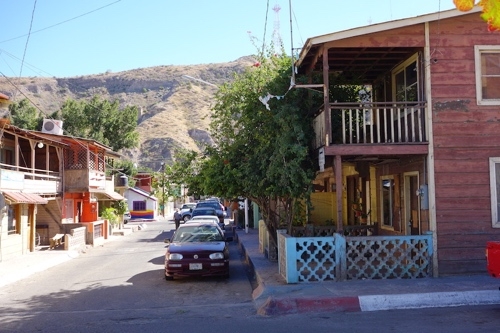
Hurricane Odile
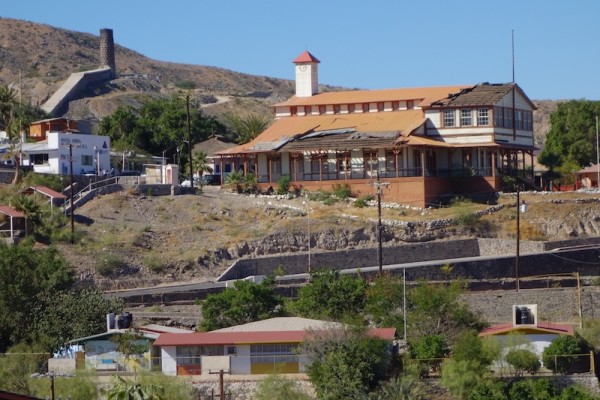
Hurricane Odile, September 2014, lifted a number of roofs, including parts of the Boleo museum. And it killed the Korean manager of the mine and his assistant when their car was carried by a torrent of water into the harbor.
Another casualty was one of the two marinas in town. By all reports this place was ‘funky’ and nearly derelict, but ‘fun’. But to the distress of the half a dozen or so boats tied there when Odile’s winds and rains came through, the docks broke apart, pilings broke or crumpled, and not a boat went unscathed.
An especially sad story is that of Gold Eagle, formerly a well-tended wooden 1977 Murray Peterson schooner.
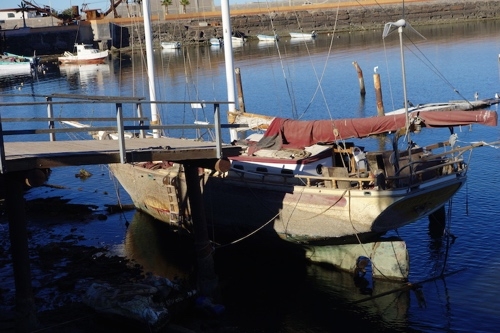
There is a campaign to raise funds and help him get the boat to a better situation, such as a place where repairs could proceed. If you Google around you’ll find more about the troubles he had even after the storm. https://fundrazr.com/campaigns/5ssRf
Gold Eagle aside, Santa Rosalia felt like a reasonably prosperous place. There was traffic, often consisting of late model pickup trucks. There was a gym with people exercising, a store selling clothes for dogs. There were even a couple ‘fancy shops’ selling things like lamps and other home decor items, and stylish clothing.
Entropy in Action
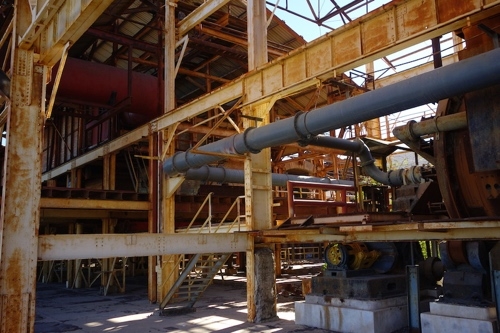
It’s perverse of me I know to admire the aged and falling-down industrial plant. I can’t recognize what anything was, but I like the big pieces of lumber, the lacy roofs, the rust, the skeletal frame remains of ??? – all so atmospheric. I’d like to integrate it into a cool hotel. It would take a billionaire, I guess, an interested and well-connected one, and a town that needed such a hotel. In the meantime, I guess it will just sit as is, awaiting developments.
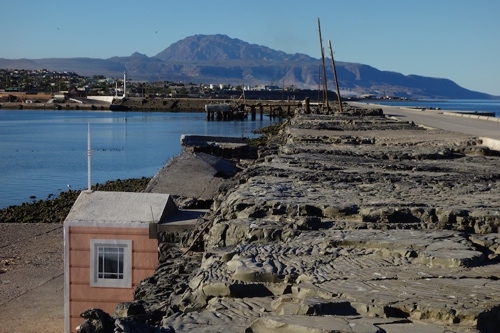
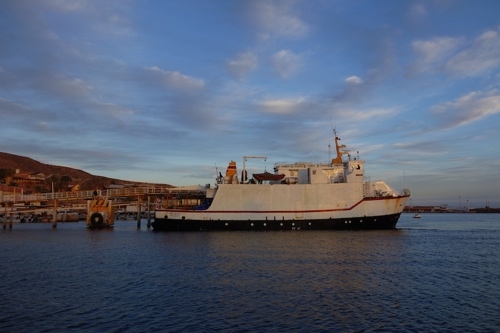
The other Santa Rosalia
No visit to town for me is complete without a visit to its shadow town, the cemetery. I was looking for graves of some of those thousands who died in the mine’s early days, but there were none, at least none with headstones.
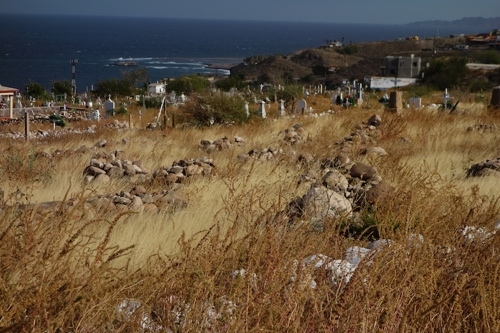
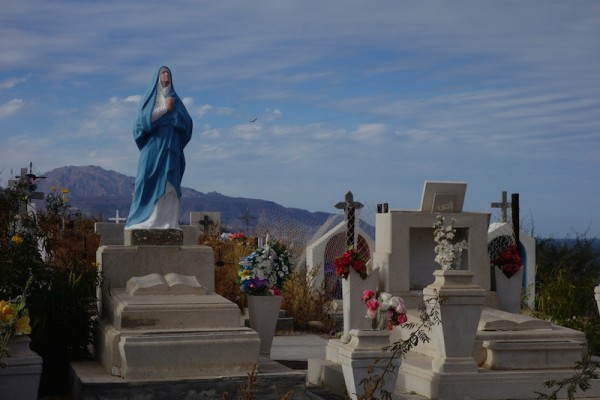
We did meet people who disliked Santa Rosalia. For one thing. apparently the town dump is on the main highway, the first thing you see coming by road. Not everyone is a fan of falling-down mining equipment. However, for me, I suspect that when I finish with Baja California I’ll still agree with Graham MacIntosh, who finds Santa Rosalia to be its most interesting town.
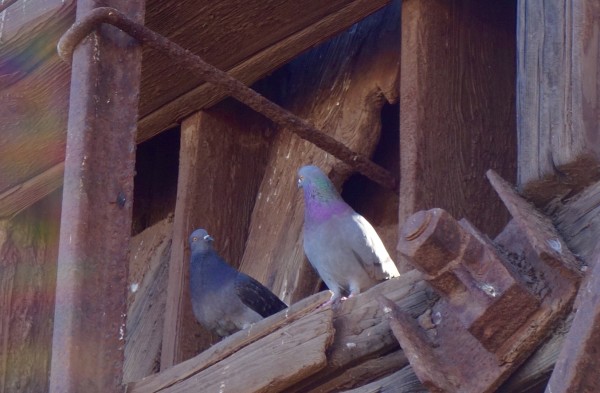
Here’s a gallery of photos that didn’t fit into the post. More to follow perhaps. I’m also still working on the map plug-in, but for now, Santa Rosalia is about halfway down the Sea of Cortez side of the Baja California peninsula.
